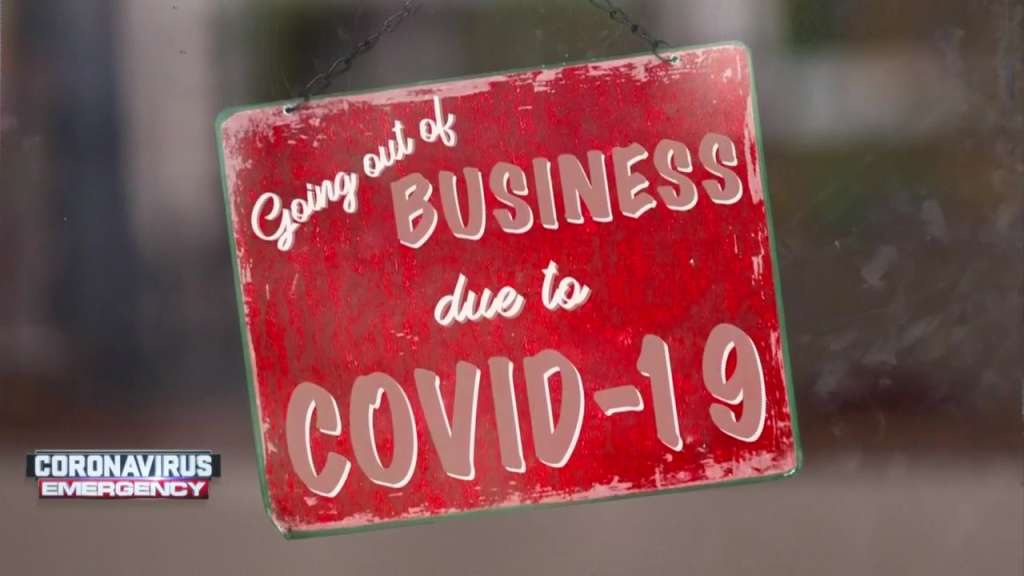When a large swath of Connecticut was forced to shut down during the early days of the coronavirus pandemic, state officials quickly created an emergency loan program from scratch, hoping to help small businesses — from pizza shops to yoga studios — weather the economic crisis.
Months later, records obtained by The Associated Press through a Freedom of Information Act request show the fledgling Connecticut Recovery Bridge Loan Program ultimately funded 2,123 one-year, no-interest loans, averaging $19,705 a piece. Because of the massive flood of applications, officials decided to cap loan amounts at $37,500 — half of the $75,000 originally promised when the program was launched in March — to help twice the number of businesses.
The change was made after officials had to stop accepting applications the day after the program was announced and decided to double the $25 million investment to $50 million, underwritten by the state’s venture capital organization.
“I think we made the decision, and I still to this day think it was the right one. We wanted to touch as many businesses as possible,” said David Lehman, commissioner of the Department of Economic and Community Development.
Ashley Krauss, owner of A Little Something White bridal salon in Darien, said the $33,330 loan she received from the state, coupled with a forgivable federal loan, helped keep her seven employees working during the two months when there were no sales.
“I didn’t furlough one person, let go anybody,” she said. “I’m proud that I was able to do that. I’m appreciative of the money I received because that was literally the thing that kept me up at night while this was going on.”
Connecticut was not alone in offering struggling small businesses no- or low-interest loans, or in some cases, grants. Florida, Louisiana, Minnesota, New Jersey, New Mexico, Washington, Utah and Pennsylvania came up with programs after the pandemic hit, while many cities, including San Francisco, Denver and Chicago, also offered loans to local businesses. Amounts have ranged from $3,000 to $100,000.
In Connecticut, records show 15.4% of the state’s loans went to minority-owned businesses and 27.6% were issued to women-owned businesses. Full repayment is required one year after receipt of the funds, but applicants can request a six-month extension.
While Lehman considers Connecticut’s program a success, it appears unlikely it will be resurrected, despite calls for more help. He contends small businesses would benefit much more from another round of funding for the federal Paycheck Protection Program, a forgivable loan program that was in the early stages of development when Connecticut announced its bridge loan program.
Lehman said Connecticut businesses fared well in the first PPP round, with 64,629 receiving a total of $6.7 billion in forgivable loans, so long as they meet certain criteria, averaging $104,000 per loan. Additionally, 20,000 businesses received $1.4 billion in Economic Injury Disaster Loans offered by the Small Business Administration.
“So when you compare that to the financial wherewithal of the state,” Lehman said, “our view is, this is not a Connecticut issue. This is a nationwide issue. And the federal government has the ability to print money and they’ve got the fiscal bazooka.”
Roughly 80% of the Connecticut businesses that received money from the state’s bridge loan program also received PPP funds, said Lehman, who did not rule out the state coming up with other ways to help small businesses.
Scott Dolch, executive director of the Connecticut Restaurant Association, said he’d like Connecticut to use about $60 million of the $1.4 billion the state has received in federal coronavirus aid under the CARES Act to create a grant program for small businesses. He said many Connecticut restaurants can’t afford to take on more debt.
He noted that Rhode Island last month began doling out grants averaging $15,000 to small businesses that can prove they’ve experienced a financial hardship due to the pandemic. Two hundred restaurants have already received funds.
“Obviously our restaurants are going to need it into the fall and winter when we lose outdoor dining and what’s that going to mean,” Dolch said.
Andrew Markowski, Connecticut state director of the National Federation of Independent Businesses, said members also like the idea of a grant program, as well as the continued relaxation of state regulations.
Dolch has been discussing with Lehman ways to possibly adjust current restrictions on restaurants, such as swapping the current 50% capacity limits on indoor dining with 6-foot (2-meter) distances between tables. He suggested the state might also consider paying off the bridge loans with some of the federal money.
Democratic Gov. Ned Lamont, a former businessman, said last week he understands the constraints facing restaurants. However, he said he regularly hears pleas from many competing interests for a share of the federal funds Connecticut has received.
But Dolch said this is an opportunity for Connecticut to be a leader in an effort that “will pay dividends for everybody.”
“We understand schools need it, we understand hospitals need it, we understand that,” Dolch said. “But we also understand that our small businesses are going to matter when we get through this pandemic, when we get to 2021 and 2022.”
(Copyright (c) 2024 The Associated Press. All Rights Reserved. This material may not be published, broadcast, rewritten, or redistributed.)

